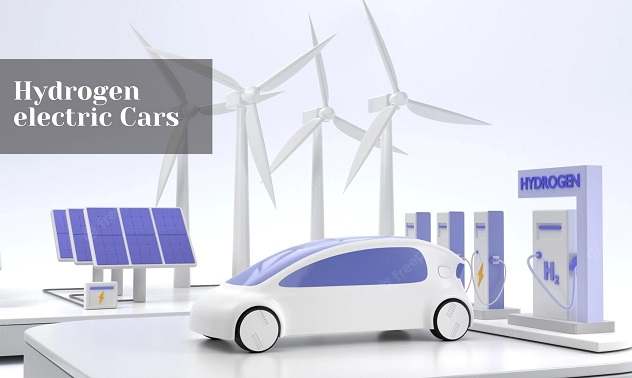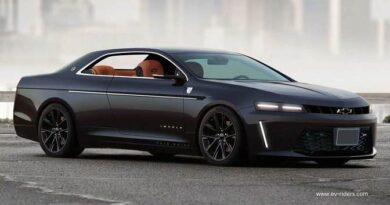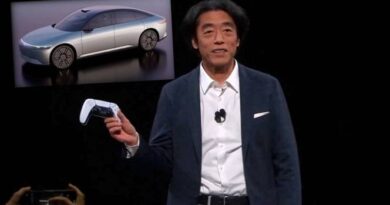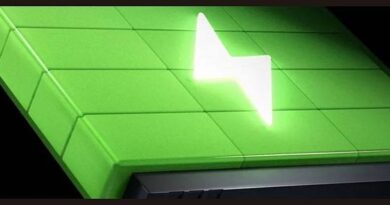Hydrogen Cars with Most Advanced FCEV Powertrains
Hydrogen Cars with Most Advanced FCEV Powertrains
The scarcity of rare earth minerals indicates that battery-electric autumn wheels will not be able to fully future transportation needs.
We are constantly reminded at least partially, the segment of zero mission vehicles must be occupied with hydrogen part models.

We continue exploring the segment of fuel cell technology, and we’ll demonstrate the latest advancements in the field.
1- Hyundai Ambition 74
Hyundai Ambition 74 to flex its muscles as the self-proclaimed leader and the sustainable performance technology, Hyundai released a lab study of a high-performance hydrogen fuel cell hybrid.
- The Envision 74 paced homage to the Hyundai Pony coop concept from 1974 that was developed by the legendary Italian automotive designer Giorgia To.
- The new highlight of his exterior look is parametric pixel lighting and a distinctive Bpillar of the original.
- This build is based on the latest hydrogen fuel cell architecture from Korea that combines a 62 4K battery pack with the 800 volts architecture and a fuel cell system that carries £9 of hydrogen.
- The total output of this retro sports car reaches 670 HPW, 664-pound feet, and 375 h. Where ago the world’s first hydrogen-powered electric pickup truck will be manufactured in Australia sometime in 2023.
2- H2X Warrego
The year-ago combines a 60 kW fuel cell system that is connected to the rear or all-wheel drive electric powertrain with a 30 kWh battery in the top configuration. The model is rated for 354 mph.
- Top Speed this truck carries four fuel tanks that can store hydrogen at 700 bar. That allows it to extend its maximum range to 280 miles.
- According to H Two, X Weirico will be targeting agricultural, mining, and construction market segments, so it should easily to 500 lbs. And carry 222 £0 of payload.
3- Hyperion XP-1
After a rapid rise in California, the automotive startup Hyperion Motors has moved operations to Columbus, Ohio.
- The world’s most powerful hydrogen hypercar is scheduled to go into production in 2023. Unlike its impactors, Hyperion does not use a battery pack.
- Instead, the four-motor system relies on the ultracapacitors that buffer the output of the hydrogen fuel cells.
- The cell wheel drive powertrain also incorporates a three-speed transmission and a bulletproof hydrogen tank.
- The creators promise one 0 miles of range, 220 image top speed, and a two-second zero to 60. The Hyperion XP One has a carbon titanium monocoque chassis, V Wang doors, a 134-inch glass canopy, and active air components that also act as solar panels.
Despite housing a fully furnished premium cabin with a 98-inch screen, its dry weight should not exceed £275.
4- Toyota G R Yaris H2
We are all familiar with the basic principle of how hydrogen cars work. Fuel cells generate electricity that is offered by a battery pack and then distributed to the electric motors.
- Toyota is the leader in this technology, but the Japanese are also developing an entirely different powertrain where hydrogen is used as traditional fuel directly by Vanchen.
- The working prototype was demonstrated by the company’s CEO and four-time World Rally Championship winner Juhakim Kunan at the Ypres Rally.
- The specs of the Toyota Grsh two are supposed to be more or less identical to the standard Gr with the 1.6023 cylinders.
Due to the more intense hydrogen detonations, it gets a strengthened block at a modified injection system.
5- Renault Scenic Vision
Iran no Scenic Vision this concept version of the Scenic graduates from the compact MPV niche and becomes a crossover from the outside.
It previews the upcoming new generation model, though, in terms of technology and interior design, the Scenic Vision looks into the brand’s distant future.
The thrust-over has chiseled exterior lines, a closed-out front face, attractive Led headlights, and new 21-inch wheels.
On the drivetrain front, the company’s playing around with an idea of a hydrogen-electric system.
It consists of an electric motor making 218 HP, a 40-kilowatt-hour battery, and a 16-kilowatt fuel cell acting as the range extender.
The interior of the crossover is performed using recycled materials and eco-friendly carbon fiber. Plus the entire car is set to be 95% recyclable.
If you agree that hydrogen cars will play an important role in the zero-emission future of our planet.
6- River simple Rasa
The tiny Rasa by the Welsh company River Simple has been under development at least since 2009, and in these years it was often written off as a failed project.
River simple, however, never gave up on the idea and continued honing its design and construction. The final Rasa is a lightweight city car with a carbon fiber chassis and Gulf wine tours.
Its body is extremely aerodynamic, achieving a 00:24 drag coefficient. The drivetrain system is quite humble.
A fuel cell can choose four and wheel motors with twelve horses. Aided by ultracapacitors.
The setup pushes the car to 60 mph, minimizes energy losses, and manages to take full advantage of regenerative braking.
According to the company, Erasa carries just three £3 of hydrogen stored at 350 bars, and it should be enough for 280 miles of steady driving.
7- Forze X
What started in 2007 as a student-based project specializing in building hydrogen-fueled power trains and ports resulted in a leading racing team that delivered eight racing cars for various competitions.
14 Nine is the epitome of 15 years of experience and the fastest car in this category in the world.
It is capable to hit 60 mph in just 3 seconds, while its top speed is limited to 186 mph. Weighing a bit over £330, the Four-wheel drive Four C Nine features two fuel cell systems that deliver continuous 326 HP, while in the boost mode, the output races to over 800 horses.
Due to the constant development of hydrogen technologies, four C secured more space for fuel tanks, and the new build cannot compete for one artwork before refueling.
8- BMW ix5 Hydrogen
The fact that Germany has recently invested $9 billion into the hydrogen infrastructure could explain BMW’s continued interest in the development of fuel cell technology.
The key role in this push will be played by the Mion High Competence Center for Hydrogen.
Over there, BMW stacks fuel cells from Toyota and combines them with a fifth-generation BMW drive. The powertrain sends 374 HP to the rear wheels and ensures 312 miles of range, which is a courtesy of a duo of 700 bar carbon reinforced tanks.
In other aspects, it is the Good Lbmwx five of the fourth generation with the Itrive seven infotainment and premium interior.
Interestingly, this SUV will not be available for purchase, and rather will be sent to individuals and influencers for testing.
9- NAMX Suv
NAMX SUV Founded by False Anaia and Thomas Delusek NAMEX is an up-and-coming Afroeuropean industrial and technological startup that will be headquartered in France.
Their SUV was code designed with Pininfarina who chose to stick with the raw and modern SUV curves and created the DRL signature highlighting the exploratory nature of the model.
The NAMX will arrive in two versions a 286 HP rear-wheel drive and the range-topping four-wheel-drive At GTH with 532 HP 4260 and 155 mph top speed.
To achieve infinite mobility, Nanox has patented a new fuel cell technology with a fixed hydrogen tank and six additional removable capsules for a total range of 487 miles, or 800 km.
10- Alpine A 4810
A close collaboration between the European Design Institute from Turin and the French Alpine gives life to this concept supercar.
The two cedar boasts the Formula One-inspired carbon fiber bodywork. There is a gigantic splitter on the front end, an ultra-thin strip of Led lights, and massive wheel arches.
The rear end also sports futuristic transparent Led taillights shaped like light plates.
A rather spacious cabin features two low-slung bucket seats with a fixed backrest angle. Formula One-derived steering wheel features the console panel in the center and red ambient lighting.
The cross-party train runs on hydrogen, but it is not clear whether it functions as an internal combustion engine or features a fuel cell.
Would you consider buying a hydrogen fuel cell car to avoid range anxiety and long stops for refueling?
Related Post




Top site ,.. i will save for later !
Hm,.. amazing post ,.. just keep the good work on!